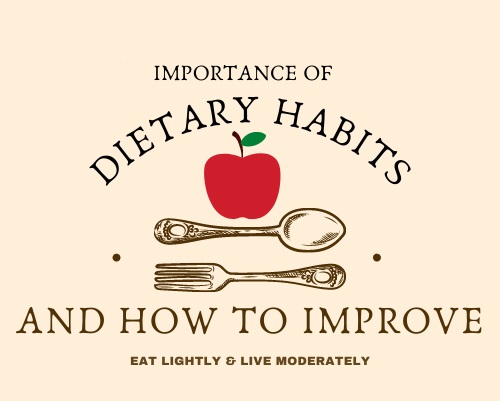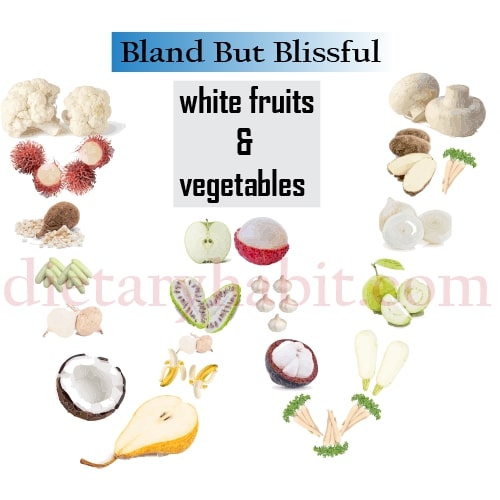What is WOE Diet? (Explained with Best Meal Plans)

The Way of Eating (WOE) diet is making waves in the nutrition world, challenging traditional diet norms and encouraging a more personalized approach to eating. If you’ve ever felt overwhelmed by the rigid rules of conventional diets or confused by conflicting nutritional advice, the WOE diet might be your breath of fresh air. In this blog post, we’ll dive deep into the WOE diet, exploring its fundamental principles, benefits, misconceptions, and practical tips for adopting this flexible eating philosophy.
Should You Follow ABC Diet for RAPID Weight Loss?
What is the WOE Diet?
The WOE diet isn’t your typical diet plan with strict rules and forbidden foods. Instead, it’s a philosophy that promotes a healthy relationship with food by focusing on individual preferences and needs. The term “Way of Eating” itself signifies a shift from temporary dieting to a sustainable lifestyle. Historically, the WOE diet concept has roots in various cultures that emphasize balance, whole foods, and mindful eating. Unlike many diets that impose a one-size-fits-all approach, the WOE diet is adaptable and can be molded to fit any lifestyle.
The WOE diet is not a specific diet plan or program. Instead, it is a term coined to describe an individual’s dietary habits or preferences. It can refer to any type of eating pattern, including low-carb, high-fat (LCHF), paleo, vegetarian, vegan, or any other diet that someone may follow for health, ethical, or personal reasons.
It’s kind of like making your own food rules but in a chill way. It’s all about finding what works for you and your body without being tied down to a specific plan. Some folks go low-carb, others focus on plants—it’s a choose-your-own-adventure kind of deal. Just figuring out what foods make you feel awesome and rolling with that.
Components of the WOE Diet
At the heart of the WOE diet are several core principles that distinguish it from traditional diets:
- Individualized Eating Habits: Acknowledges that everyone’s body and preferences are unique. The WOE diet allows you to choose foods that work best for you.
- Whole, Unprocessed Foods: Emphasizes eating foods in their natural state, which are packed with nutrients and free from artificial additives and preservatives.
- Mindful Eating: Encourages awareness of hunger and fullness cues, helping you develop a healthier relationship with food.
- Flexibility: Adapts to various dietary needs, whether you’re vegetarian, vegan, gluten-free, or follow another specific dietary regimen.
Benefits of the WOE Diet

Embracing the WOE diet can offer numerous benefits, both physical and psychological:
- Improved Digestion: Whole, unprocessed foods are easier on the digestive system, leading to better gut health.
- Weight Management: By focusing on nutrient-dense foods and mindful eating, the WOE diet can naturally aid in weight management without the need for calorie counting.
- Enhanced Relationship with Food: Reduces the stress and guilt associated with eating, fostering a more positive and relaxed attitude towards food.
- Increased Energy Levels: Nutrient-rich foods provide sustained energy throughout the day, reducing the likelihood of energy slumps.
- Reduced Inflammation: The WOE Diet can help to reduce inflammation in the body, which is a risk factor for numerous chronic diseases. By consuming anti-inflammatory foods like fruits, vegetables, and healthy fats, the WOE Diet can help to promote overall health and wellbeing.
- Customizable: The WOE Diet is a flexible approach to eating that can be adapted to meet individual dietary needs and preferences. This can help to increase adherence and sustainability over the long-term.
Common Misconceptions About the WOE Diet
Several misconceptions often cloud the WOE diet. Let’s clear up some of the most common ones:
- Not Just Another Restrictive Diet: The WOE diet is often mistaken for a restrictive plan, but it’s actually quite the opposite. It encourages variety and balance rather than eliminating entire food groups.
- Nutritional Balance: Some people believe the WOE diet might lack nutritional adequacy, but it can be very balanced if planned well.
- Not a Fad: Unlike many fad diets that come and go, the WOE diet is a sustainable lifestyle approach that can be maintained long-term.
Books
These books will provide you with in-depth information and evidence-based insights into various dietary approaches and the principles of WOE.
- “The Keto Diet: The Complete Guide to a High-Fat Diet” by Leanne Vogel: A comprehensive guide to the Keto diet. View on Amazon
- “The Mediterranean Diet Cookbook: A Complete Guide” by Elena Paravantes: Offers a variety of recipes and insights into the Mediterranean diet. View on Amazon
- “The Carnivore Diet” by Shawn Baker: Explores the benefits and principles of the Carnivore diet. View on Amazon
- “The Whole30: The 30-Day Guide to Total Health and Food Freedom” by Melissa Hartwig Urban: Provides an approach similar to WOE, focusing on whole, unprocessed foods. View on Amazon
WOE Diet Meal Plans
To help you kick-start your journey, here are seven sample meal plans that align with the WOE diet’s principles. These plans offer a variety of options to suit different preferences and dietary needs.
Plan 1: Balanced and Nutrient-Dense
| Meal | Menu |
|---|---|
| Breakfast | Greek yogurt with fresh berries and a sprinkle of chia seeds |
| Mid-morning snack | Apple slices with almond butter |
| Lunch | Quinoa salad with mixed greens, cherry tomatoes, cucumbers, and grilled chicken |
| Afternoon snack | Carrots and celery sticks with hummus |
| Dinner | Baked salmon with roasted sweet potatoes and steamed broccoli |
| Dessert | Fresh fruit or a small piece of dark chocolate |
Plan 2: Plant-Based Focus
| Meal | Menu |
|---|---|
| Breakfast | Smoothie bowl with spinach, banana, almond milk, topped with granola |
| Lunch | Lentil soup with a side of whole-grain bread |
| Dinner | Stir-fried tofu with mixed vegetables and brown rice |
| Snack | Hummus with carrot and celery sticks |
Plan 3: Low-Carb Approach
| Meal | Menu |
|---|---|
| Breakfast | Scrambled eggs with avocado and a side of mixed greens |
| Lunch | Cobb salad with turkey, bacon, hard-boiled eggs, and blue cheese dressing |
| Dinner | Grilled steak with cauliflower mash and asparagus |
| Snack | Cheese cubes and a handful of walnuts |
Plan 4: Mediterranean-Inspired
| Meal | Menu |
|---|---|
| Breakfast | Whole-grain toast with smashed avocado and a poached egg |
| Lunch | Chickpea and vegetable wrap with tzatziki sauce |
| Dinner | Grilled chicken with a side of tabbouleh and roasted vegetables |
| Snack | Olives and a small handful of almonds |
Plan 5: Gluten-Free Option
| Meal | Menu |
|---|---|
| Breakfast | Smoothie with kale, mango, coconut milk, and protein powder |
| Lunch | Quinoa and black bean salad with lime dressing |
| Dinner | Baked cod with quinoa and a side of sautéed spinach |
| Snack | Rice cakes with peanut butter and banana slices |
Plan 6: High-Protein Focus
| Meal | Menu |
|---|---|
| Breakfast | Cottage cheese with pineapple and a handful of walnuts |
| Lunch | Grilled chicken breast with a side of quinoa and steamed green beans |
| Dinner | Turkey meatballs with zucchini noodles and marinara sauce |
| Snack | Greek yogurt with a drizzle of honey and almonds |
Plan 7: Paleo-Inspired
| Meal | Menu |
|---|---|
| Breakfast | Scrambled eggs with spinach and mushrooms |
| Lunch | Salad with mixed greens, cherry tomatoes, avocado, and grilled shrimp |
| Dinner | Roast pork tenderloin with mashed cauliflower and roasted Brussels sprouts |
| Snack | Sliced bell peppers with guacamole |
WOE Diet for Diabetes
Managing diabetes with the WOE diet requires careful selection of foods to keep blood sugar levels stable. Here are some key strategies and a sample meal plan:
Key Strategies
- Low-Glycemic Index Foods: Choose foods that release sugar slowly into the bloodstream to avoid spikes.
- Fiber-Rich Choices: Fiber helps regulate blood sugar levels and promotes satiety, which can prevent overeating.
- Balanced Meals: Include a mix of proteins, fats, and carbohydrates in each meal to keep blood sugar levels steady.
WOE Diet Diabetic-Friendly Meal Plans
Plan 1: Diabetic-Friendly Meal Plan
| Meal | Menu |
|---|---|
| Breakfast | Veggie omelette with spinach, tomatoes, and bell peppers |
| Lunch | Quinoa and black bean salad with mixed greens and a lemon vinaigrette |
| Dinner | Grilled chicken with roasted Brussels sprouts and a side of brown rice |
| Snack | Celery sticks with almond butter |
Plan 2: Diabetic-Friendly Meal Plan
| Meal | Menu |
|---|---|
| Breakfast | Chia pudding made with almond milk, topped with fresh berries |
| Lunch | Turkey and avocado lettuce wrap with a side of carrot sticks |
| Dinner | Baked tilapia with a side of sautéed green beans and sweet potato mash |
| Snack | Handful of mixed nuts |
Plan 3: Diabetic-Friendly Meal Plan
| Meal | Menu |
|---|---|
| Breakfast | Smoothie with spinach, cucumber, apple, and chia seeds |
| Lunch | Lentil soup with a side of whole-grain crackers |
| Dinner | Stuffed bell peppers with quinoa, black beans, and diced tomatoes |
| Snack | Sliced apple with a handful of walnuts |
Plan 4: Diabetic-Friendly Meal Plan
| Meal | Menu |
|---|---|
| Breakfast | Greek yogurt with a sprinkle of flaxseeds and a few raspberries |
| Lunch | Spinach salad with grilled shrimp, cherry tomatoes, and a light balsamic vinaigrette |
| Dinner | Turkey chili with a side of steamed broccoli |
| Snack | Cottage cheese with a handful of blueberries |
Plan 5
| Meal | Menu |
|---|---|
| Breakfast | Oatmeal with berries and a spoonful of flaxseeds |
| Lunch | Grilled chicken salad with a variety of colorful vegetables and a light vinaigrette |
| Dinner | Baked salmon with quinoa and steamed broccoli |
| Snack | Greek yogurt with a few almonds |
Plan 6: Diabetic-Friendly Meal Plan
| Meal | Menu |
| Breakfast | Smoothie with kale, almond milk, chia seeds, and a handful of strawberries |
| Lunch | Tuna salad with mixed greens, cherry tomatoes, and a light vinaigrette |
| Dinner | Roasted turkey breast with quinoa and a side of steamed asparagus |
| Snack | Celery sticks with hummus |
Plan 7: Diabetic-Friendly Meal Plan
| Meal | Menu |
| Breakfast | Cottage cheese with a handful of blueberries and a few walnuts |
| Lunch | Grilled salmon salad with mixed greens, cucumber, and a lemon dressing |
| Dinner | Chicken stir-fry with mixed vegetables and a side of brown rice |
| Snack | Sliced bell peppers with guacamole |
Plan 8: Diabetic-Friendly Meal Plan
| Meal | Menu |
| Breakfast | Chia pudding with almond milk and topped with fresh berries |
| Lunch | Quinoa and black bean salad with a side of mixed greens |
| Dinner | Baked cod with a side of roasted Brussels sprouts and sweet potato mash |
| Snack | Handful of mixed nuts |
WOE Diet vs. Other Diets: Key Differences
| Feature | WOE Diet | Keto Diet | Paleo Diet | Vegan Diet | Mediterranean Diet |
|---|---|---|---|---|---|
| Focus | Personalized, whole foods | High fat, very low carb | Whole, unprocessed foods | Plant-based, no animal products | Plant-based, healthy fats |
| Flexibility | High | Low | Moderate | Moderate to high | High |
| Restrictions | Minimal | High | Moderate to high | High | Low to moderate |
| Sustainability | Long-term lifestyle | Short to medium term | Medium to long term | Medium to long term | Long-term lifestyle |
| Weight Management | Gradual weight loss | Rapid weight loss | Weight loss, muscle mass | Varies | Varies |
| Health Benefits | Digestion, energy, food relationship | Insulin sensitivity, weight loss | Digestion, inflammation | Cardiovascular health, reduced cancer risk | Heart health, reduced chronic diseases |
| Ease of Adoption | Easy to moderate | Difficult | Moderate | Moderate to difficult | Easy to moderate |
| Adaptability | High | Low | Moderate | High | High |
| Suitability for Diabetes | Very suitable | Not typically recommended | Suitable with modifications | Suitable with planning | Very suitable |
Monitoring Progress and Adjusting
While following the WOE diet, it’s essential to monitor your progress and make adjustments as needed. Here are a few tips:
- Track Blood Sugar Levels: Regularly check your blood sugar levels to see how different foods affect you.
- Listen to Your Body: Pay attention to how your body responds to various meals and adjust your food choices accordingly.
- Stay Hydrated: Drinking enough water is crucial for overall health and can help manage blood sugar levels.
Tips for Dining Out
Adhering to the WOE diet doesn’t mean you have to avoid dining out. Here are some tips to help you make healthy choices when eating at restaurants:
- Look for Whole Foods: Choose dishes that feature whole, unprocessed ingredients.
- Customize Your Order: Don’t hesitate to ask for modifications to fit your dietary needs.
- Mind Portion Sizes: Restaurant portions are often larger than necessary. Consider sharing a dish or taking leftovers home.
Staying Motivated
Maintaining a healthy way of eating can be challenging, but these strategies can help keep you motivated:
- Set Realistic Goals: Establish achievable short-term and long-term goals.
- Find Support: Connect with friends, family, or online communities for encouragement and accountability.
- Celebrate Progress: Acknowledge and reward yourself for making healthy choices and reaching milestones.
Conclusion
The WOE diet offers a refreshing approach to healthy eating, emphasizing flexibility, mindfulness, and balance. It’s adaptable to your lifestyle and preferences, making it a sustainable choice for long-term health. Whether you’re looking to improve digestion, manage your weight, or develop a healthier relationship with food, the WOE diet provides a practical framework to achieve your goals.
FAQs about the WOE Diet
What is WOE in Diet?
WOE stands for “Way of Eating.” It represents a personalized and sustainable approach to food that emphasizes whole foods, mindful eating, and flexibility. Unlike traditional diets, WOE focuses on creating long-term healthy eating habits rather than short-term restrictions.
What is the WOE on the Keto Diet?
In the context of the Keto diet, WOE refers to maintaining a high-fat, very low-carbohydrate eating plan. This way of eating aims to put the body into a state of ketosis, where it burns fat for fuel instead of carbohydrates. Typical foods include meat, fish, eggs, high-fat dairy, and low-carb vegetables.
What is WOE in a Mediterranean Diet?
The WOE in a Mediterranean diet involves consuming primarily plant-based foods such as fruits, vegetables, whole grains, nuts, and legumes, along with healthy fats like olive oil. It also includes moderate consumption of fish and poultry, and limited intake of red meat and sweets. This eating style is celebrated for its heart health benefits and overall wellness.
What Does WOE Mean in a Carnivore Diet?
In a Carnivore diet, WOE means eating exclusively animal products. This includes meat, fish, eggs, and some dairy. The diet eliminates all plant-based foods and focuses on high-protein, high-fat animal products to provide all essential nutrients. Advocates claim benefits like weight loss and improved mental clarity, though it is a highly restrictive diet.
What is the Difference Between WOE and Other Diets?
The WOE diet emphasizes flexibility and sustainability, focusing on individual preferences and whole foods, unlike traditional diets that often involve strict rules and restrictions.
Can I Lose Weight on the WOE Diet?
Yes, many people find that by focusing on nutrient-dense foods and mindful eating, they can lose weight naturally without the need for calorie counting.
Is the WOE Diet Suitable for Vegetarians or Vegans?
Absolutely. The WOE diet can be easily adapted to fit vegetarian or vegan lifestyles, offering a wide range of whole, plant-based foods.
How Do I Start the WOE Diet?
Begin by evaluating your current eating habits. Gradually incorporate more whole foods into your diet and pay attention to your body’s hunger and fullness cues.
Are There Any Risks Associated with the WOE Diet?
Generally, the WOE diet is safe and healthy. However, it’s important to maintain a balanced diet to avoid nutritional deficiencies. Consulting with a healthcare professional can help tailor the diet to your specific needs.
Recommended Scientific Resources and Books on WOE and Various Diets
Scientific Resources
- PubMed: Search for studies on the WOE diet, Keto, Mediterranean, and Carnivore diets. Visit PubMed
- Google Scholar: Access research papers and reviews on different dietary approaches. Explore Google Scholar
- NIH Nutrition Research: Find relevant studies and articles on nutrition and various diets. NIH Nutrition Research



